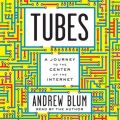 Tubes
Tubes
Автор: Andrew Blum
Год издания: 0000
 Carbon Nanotubes and Nanosensors. Vibration, Buckling and Balistic Impact
Carbon Nanotubes and Nanosensors. Vibration, Buckling and Balistic Impact
Автор: Isaac Elishakoff
Год издания:
The main properties that make carbon nanotubes (CNTs) a promising technology for many future applications are: extremely high strength, low mass density, linear elastic behavior, almost perfect geometrical structure, and nanometer scale structure. Also, CNTs can conduct electricity better than copper and transmit heat better than diamonds. Therefore, they are bound to find a wide, and possibly revolutionary use in all fields of engineering. The interest in CNTs and their potential use in a wide range of commercial applications; such as nanoelectronics, quantum wire interconnects, field emission devices, composites, chemical sensors, biosensors, detectors, etc.; have rapidly increased in the last two decades. However, the performance of any CNT-based nanostructure is dependent on the mechanical properties of constituent CNTs. Therefore, it is crucial to know the mechanical behavior of individual CNTs such as their vibration frequencies, buckling loads, and deformations under different loadings. This title is dedicated to the vibration, buckling and impact behavior of CNTs, along with theory for carbon nanosensors, like the Bubnov-Galerkin and the Petrov-Galerkin methods, the Bresse-Timoshenko and the Donnell shell theory.
 Polymer Nanotubes Nanocomposites. Synthesis, Properties and Applications
Polymer Nanotubes Nanocomposites. Synthesis, Properties and Applications
Автор: Vikas Mittal
Год издания:
Since the publication of the successful first edition of the book in 2010, the field has matured and a large number of advancements have been made to the science of polymer nanotube nanocomposites (PNT) in terms of synthesis, filler surface modification, as well as properties. Moreover, a number of commercial applications have been realized. The aim of this second volume of the book is, thus, to update the information presented in the first volume as well as to incorporate the recent research and industrial developments. This edited volume brings together contributions from a variety of senior scientists in the field of polymer nanotube composites technology to shed light on the recent advances in these commercially important areas of polymer technology. The book provides the following features: Reviews the various synthesis techniques, properties and applications of the polymer nanocomposite systems Describes the functionalization strategies for single walled nanotubes in order to achieve their nanoscale dispersion in epoxy matrices Provides insights into the multiscale modeling of the properties of PNT Provides perspectives on the electron microscopy characterization of PNT Presents an overview of the different methodologies to achieve micro-patterning of PNT Describes the recent progress on hybridization modifications of CNTs with carbon nanomaterials and their further applications in polymer nanocomposites Provides details on the foams generates with PNT Provides information on synthesis and properties of polycarbonate nanocomposite. Describes the advanced microscopy techniques for understanding of the polymer/nanotube composite interfaces and properties.
 Carbon Meta-Nanotubes. Synthesis, Properties and Applications
Carbon Meta-Nanotubes. Synthesis, Properties and Applications
Автор: Marc Monthioux
Год издания:
Meta-Nanotubes are a new generation of carbon nanotubes (CNTs) which result from the chemical transformation of regular CNTs and their subsequent combination with foreign materials (atoms, molecules, chemical groups, nanocrystals) by various ways such as functionalisation, doping, filling, and substitution. These new nanomaterials exhibit enhanced or new properties, such as reactivity, solubility, and magnetism, which pristine CNTs do not possess. Their many applications include electronic and optoelectronic devices, chemical and biosensors, solar cells, drug delivery, and reinforced glasses and ceramics. Carbon Meta-Nanotubes: Synthesis, Properties and Applications discusses these third generation carbon nanotubes and the unique characteristics they possess. Beginning with a general overview of the subject, this book covers the five main categories of meta-nanotubes, namely: Doped Carbon Nanotubes Functionalised Carbon Nanotubes Decorated or Coated Carbon Nanotubes Filled Carbon Nanotubes Heterogeneous Nanotubes Providing unparalleled coverage of these third generation or meta-nanotubes, and possibilities for future development, this book is essential for anyone working on carbon nanotubes.
 Carbon Nanotubes and Related Structures. Synthesis, Characterization, Functionalization, and Applications
Carbon Nanotubes and Related Structures. Synthesis, Characterization, Functionalization, and Applications
Автор: Guldi Dirk M.
Год издания:
Written by the most prominent experts and pioneers in the field, this ready reference combines fundamental research, recent breakthroughs and real-life applications in one well-organized treatise. As such, both newcomers and established researchers will find here a wide range of current methods for producing and characterizing carbon nanotubes using imaging as well as spectroscopic techniques. One major part of this thorough overview is devoted to the controlled chemical functionalization of carbon nanotubes, covering intriguing applications in photovoltaics, organic electronics and materials design. The latest research on novel carbon-derived structures, such as graphene, nanoonions and carbon pea pods, round off the book.
 Supramolecular Chemistry of Fullerenes and Carbon Nanotubes
Supramolecular Chemistry of Fullerenes and Carbon Nanotubes
Автор: Martin Nazario
Год издания:
Collating our current knowledge and the latest developments for enabling breakthrough discoveries, this book focuses on the synthesis and applications of materials that are based on supramolecular assemblies of carbon nanostructures, with an emphasis on fullerenes and nanotubes. In so doing, it provides readers with an overview of the different types of supramolecular architectures, accentuating the outstanding geometrical, electronic and photophysical properties of the building blocks and the resulting structures. It makes use of basic concepts and real-life applications – from simple syntheses to complex architectures, from instructive examples to working experimental procedures, and from photophysics to solar cells. A large part of each chapter is devoted to the methods and possibilities of controlling and tuning these molecular assemblies in order to obtain working devices. Fascinating reading for materials scientists, organic chemists, molecular physicists, and those in the semiconductor industry.
 Carbon Nanotubes and Nanosensors. Vibration, Buckling and Balistic Impact
Carbon Nanotubes and Nanosensors. Vibration, Buckling and Balistic Impact
 Polymer Nanotubes Nanocomposites. Synthesis, Properties and Applications
Polymer Nanotubes Nanocomposites. Synthesis, Properties and Applications
 Carbon Nanotubes and Related Structures. Synthesis, Characterization, Functionalization, and Applications
Carbon Nanotubes and Related Structures. Synthesis, Characterization, Functionalization, and Applications


